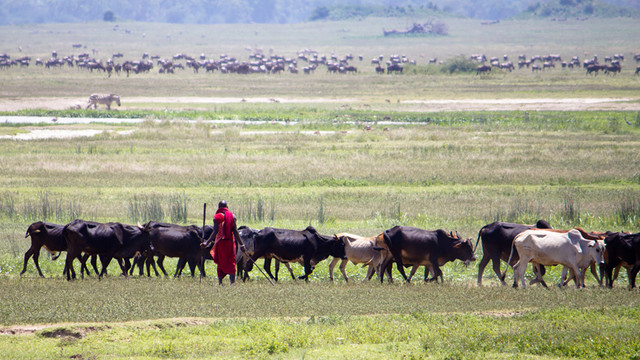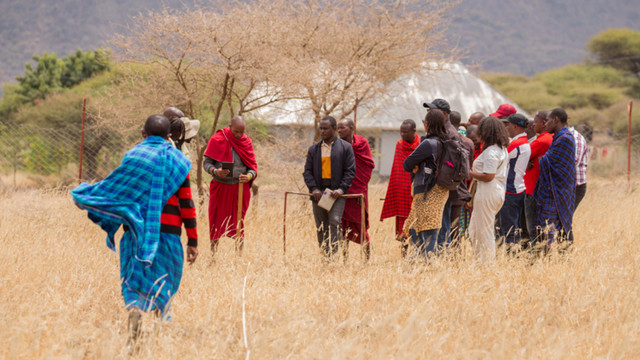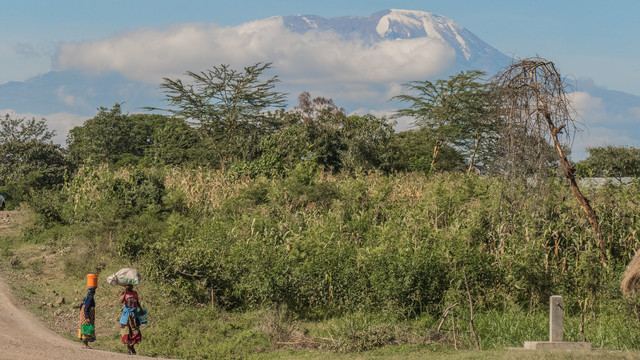Investing in adaptation to climate change brings bonus benefits
Is a problem shared a problem halved? This is the question that sprang to mind this week in Nepal when I met with fellow field trip participants ahead of the 8th international conference on community based adaptation to climate change (CBA8).


Maize crops in Kirtipur Village, Nawalparasi District, Nepal (Photo: Kate Wilson/IIED)
As we introduced ourselves I was struck by the diversity of countries, organisations and professions represented. From Vietnam, Nepal and Bangladesh, to India, Pakistan and the Philippines, everyone had their own community-based adaptation story to share.
Our trip, hosted by a local NGO called Sahamati, took us 180km from Kathmandu to Kirtipur, a village in Nawalparasi District.
The experience of the villagers is unfortunately common to many communities in Nepal and across the world. More erratic rainfall has disturbed the crop calendar and reduced the amount of water available for irrigation. Flash floods have triggered landslides.
The villagers are working with Sahamati and Practical Action Nepal to cope with these hazards and limit their own impacts on the local environment, such as deforestation. These aims are not mutually exclusive.
The project has identified a new water source and built an irrigation system. This not only helps the villagers to deal with more variable climate but also means they can now grow vegetables during the dry season, producing three crops a year instead of two. It is also a source of drinking water.
The villagers had previously asked the local government to fund to the irrigation system but were refused. However, after seeing the success, the local authorities now provide money for maintenance.
The villagers have also set up a community forest to reduce deforestation. The revenue from the timber they produce from this resource has paid for a road, which means better access to markets and education. A cooperative that encourages villagers to save money and plans to upgrade the local school is also in place.
Context matters
The project I have described sounds like a textbook example of community adaptation and sustainable land use. But not all communities have the same experience, and every community is different. As a fellow participant from Action Aid pointed out, in adaptation, context matters.
There are still many barriers to overcome, including how to unlock the finance needed to ensure that all vulnerable communities can adapt to the changing climate. This thorny question is the theme of the conference under way in Nepal.
It is important to note that while financial support from donors can provide the pipe and cement to build an irrigation system, it is the local community that makes local adaptation really work. Projects must understand the need of the local community and must developed with and not just for these people.
The multiplier effect
So back to my original question. A problem shared is a problem halved? This is of course too simplistic but it is certainly useful to share and learn from each other. Although context and countries differ, one fact remains the same: local communities — and the most vulnerable groups within them — must be at the heart of community based adaption discussions and interventions.
Funding an irrigation project is just the start of a long and complex journey. The 'multiplier effect' on people’s lives, is far greater than the money put in and can be more difficult to measure. We need to include these less tangible effects in the financing local adaptation debate.
In Kirtipur, for example, the irrigation system means that women and children no longer have to walk for two hours to collect drinking water. The children have more time to study and women start work at 6am now instead of 3am.
But too much talking and sharing knowledge won't lead to change. What matters is money. At the conference this week we have a real opportunity to influence the financing of community-based adaptation agenda through the Kathmandu Declaration, which will be launched on 30 April.
The drafting committee is taking input from 400 conference participants from 62 countries. It will call for a concrete commitment to improve the lives of the most vulnerable as they are forced to deal with the effects of a changing climate.
More details on CBA8, including daily coverage updates: www.CBA8.org.
Kate Wilson is IIED's publications and marketing manager (kate.wilson@iied.org).


